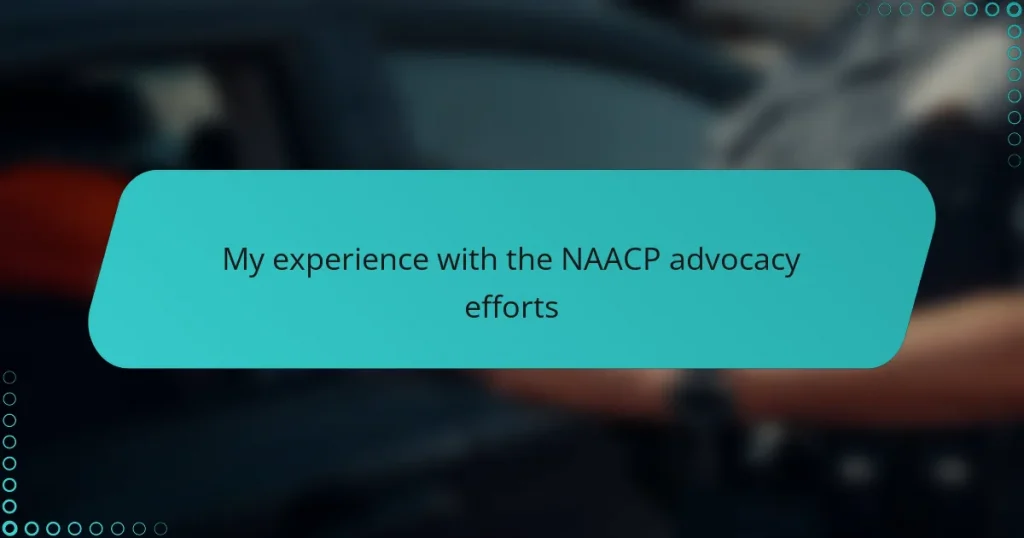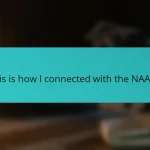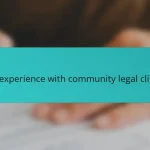Key takeaways
- Legal advocacy requires persistence, resilience, and connecting emotionally with others to transform laws into meaningful change.
- The NAACP effectively combines legal strategy and community empowerment, addressing voting rights, education equity, and criminal justice reform.
- Engagement in advocacy is enhanced through inclusivity, coalition-building, and the ability to listen and connect with personal stories.
- Staying informed, communicating clearly, and participating in a supportive community are essential for successful advocacy efforts.
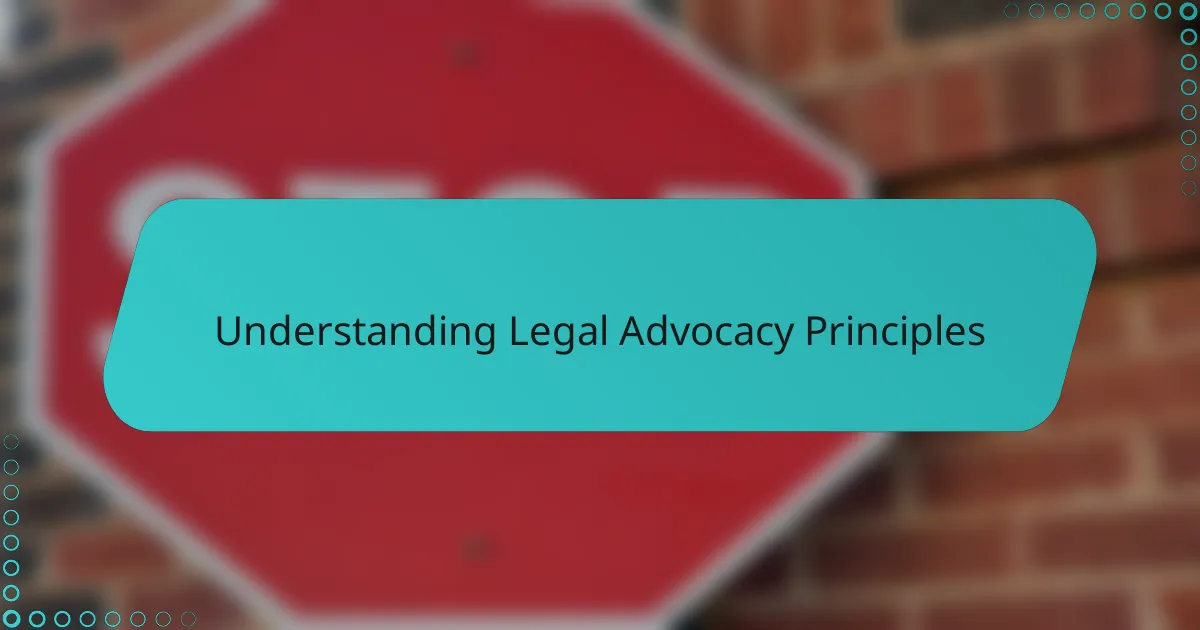
Understanding Legal Advocacy Principles
Legal advocacy, in my experience, revolves around the simple yet profound idea of using the law as a tool for justice. It made me realize that understanding the core principles isn’t just academic—it’s about seeing how laws impact real lives. Have you ever stopped to think about how advocacy transforms words on a page into meaningful change?
One principle that stood out to me is the importance of persistence. Legal advocacy isn’t a quick fix; it often requires navigating complex systems with patience and unwavering dedication. When I first got involved, I underestimated how much resilience mattered. Facing setbacks was tough emotionally, but it taught me that every small win counts.
Finally, authenticity and clarity in communication are essential. Advocating effectively means making arguments that resonate not only legally but humanely. I found that connecting emotionally with others, whether judges, legislators, or communities, made the principles come alive. Have you noticed how the law feels more approachable when advocates speak from the heart?
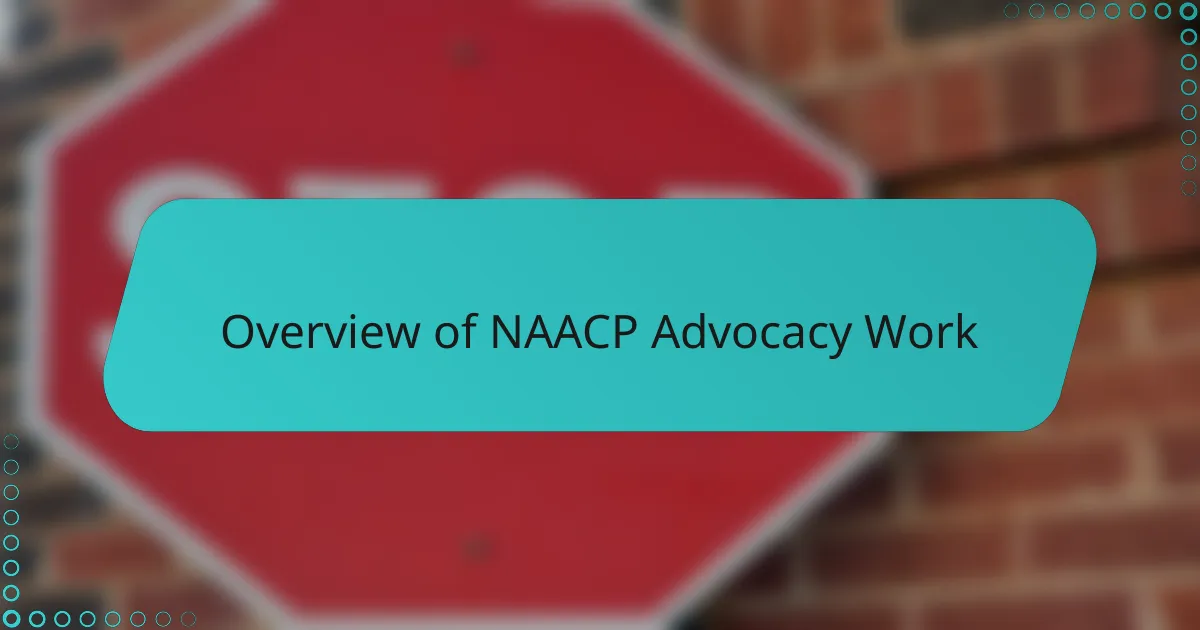
Overview of NAACP Advocacy Work
The NAACP’s advocacy work, from what I’ve seen firsthand, is deeply rooted in both legal strategy and community empowerment. What struck me most was how they don’t just fight cases in court—they mobilize people, raise awareness, and push for legislative changes simultaneously. Have you ever experienced an organization that balances both legal rigor and grassroots energy so seamlessly?
Their commitment to civil rights spans decades, tackling issues like voting rights, education equity, and criminal justice reform. I remember attending a local NAACP meeting where the passion in the room was palpable—it wasn’t just about legal briefs but about real stories affecting real families. This blend of personal stories with legal action made their work feel urgent and deeply human.
What I find inspiring is the way the NAACP uses advocacy to hold systems accountable while also nurturing hope. Have you noticed how they persist even when change seems slow? That persistence has a way of igniting hope and reminding me why legal advocacy matters beyond statutes and courtrooms.
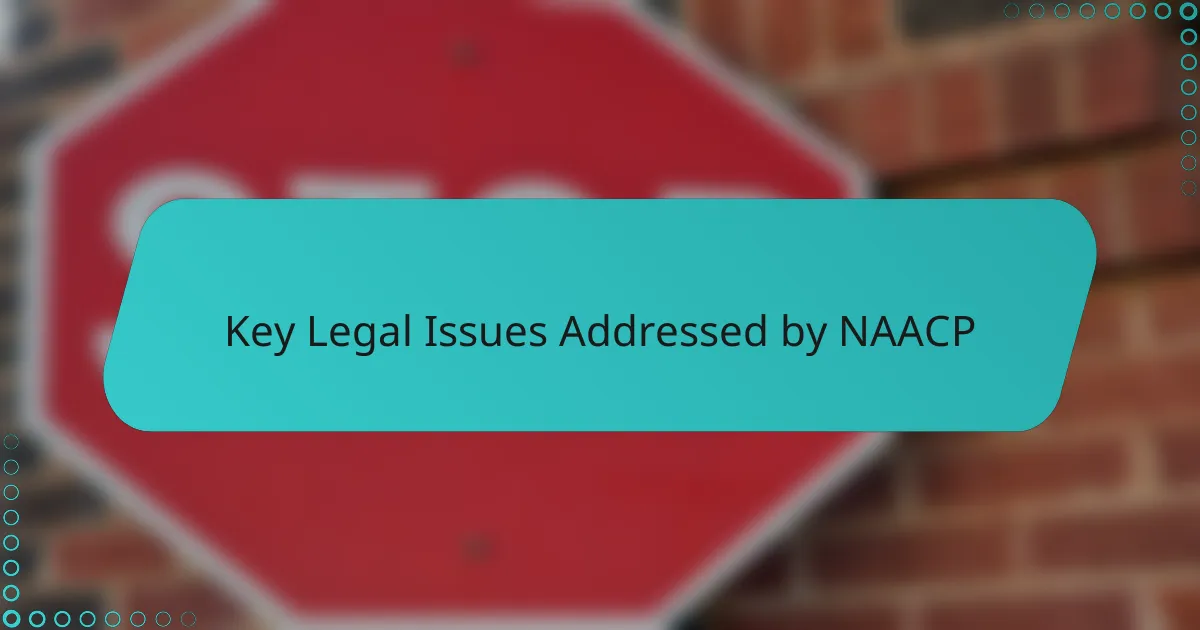
Key Legal Issues Addressed by NAACP
One of the key legal issues the NAACP confronts head-on is voting rights. I remember the frustration I felt witnessing barriers that kept people from casting their ballots, and the NAACP’s work in challenging these restrictions felt like a lifeline to democracy itself. Have you ever considered how crucial every single vote is in shaping the future?
Another major focus is education equity. It struck me how disparities in school funding and resources aren’t just numbers—they translate into real disadvantages for children in marginalized communities. I saw the NAACP pushing for policies that close these gaps, which made me realize how legal advocacy can directly impact a child’s daily experience at school.
Criminal justice reform also stood out to me as a monumental challenge the NAACP takes on. Seeing their efforts to address systemic racism and unfair sentencing gave me hope that the legal system can evolve. Doesn’t it make you wonder how many lives could be transformed with fairer laws and equal treatment under the law?
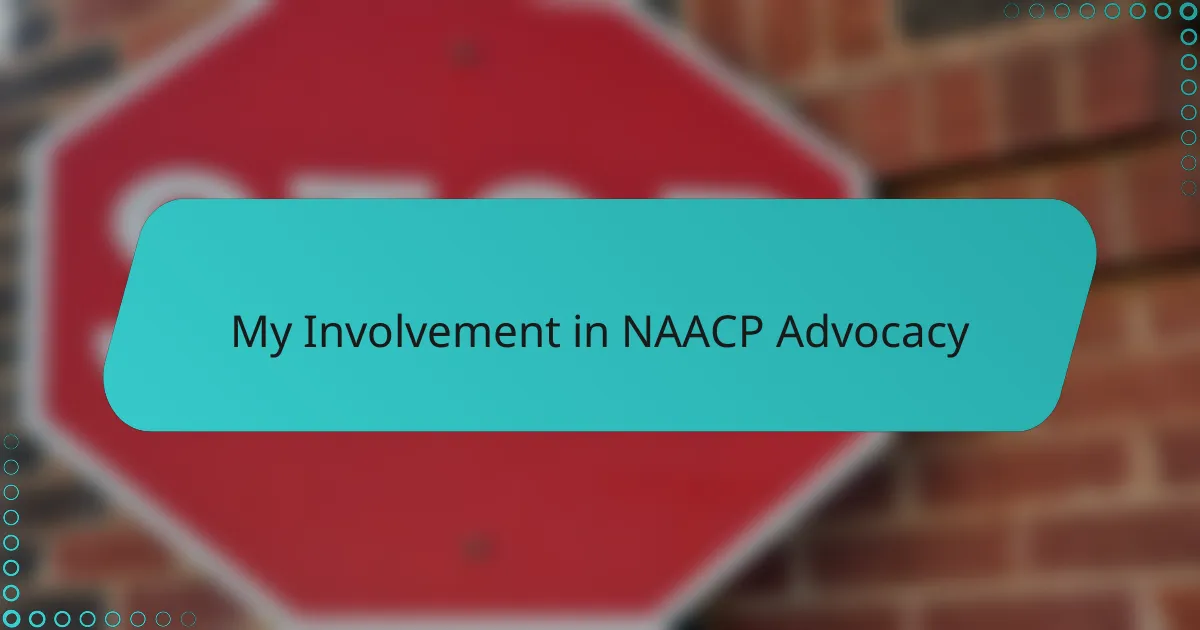
My Involvement in NAACP Advocacy
Getting involved with the NAACP’s advocacy efforts felt like stepping into a world where my passion for justice met purposeful action. I recall my first volunteer meeting, where hearing stories directly from impacted community members made the legal battles feel intensely personal. Have you ever been in a room where every conversation seems to breathe life into courtroom arguments?
One experience that stays with me was organizing a voter registration drive. Standing alongside dedicated activists, I saw firsthand how legal advocacy is about more than laws—it’s about empowering people to claim their rights. It made me realize that advocacy work really thrives when it connects grassroots energy with strategic legal goals.
What surprised me most was how inclusive the NAACP is in its approach. They welcomed questions, valued different perspectives, and reminded me that advocacy isn’t a solo act but a collective journey. Do you think legal advocacy can flourish without a strong community behind it? My time with the NAACP convinced me it cannot.

Challenges Faced During Advocacy Efforts
Sometimes, the biggest hurdle in advocacy is confronting resistance—not just from opposing parties, but from within the system itself. I remember feeling drained after lengthy meetings where progress seemed stalled by bureaucratic red tape. Have you ever faced a situation where no matter how right the cause, the wheels of change turn painfully slow?
Another challenge was balancing hope with frustration. Witnessing setbacks, like delayed legislation or entrenched opposition, tested my patience deeply. It made me question how to stay motivated when victories feel few and far between. Have you ever struggled to maintain faith when the fight appears never-ending?
Then there’s the emotional toll of hearing so many personal stories of injustice. Carrying those stories alongside the legal battles sometimes felt overwhelming. Yet, those voices also fueled my resolve—reminding me why pushing through the difficulties mattered so much. Do you think it’s possible to advocate effectively without feeling deeply connected to the people behind the issues? I don’t.
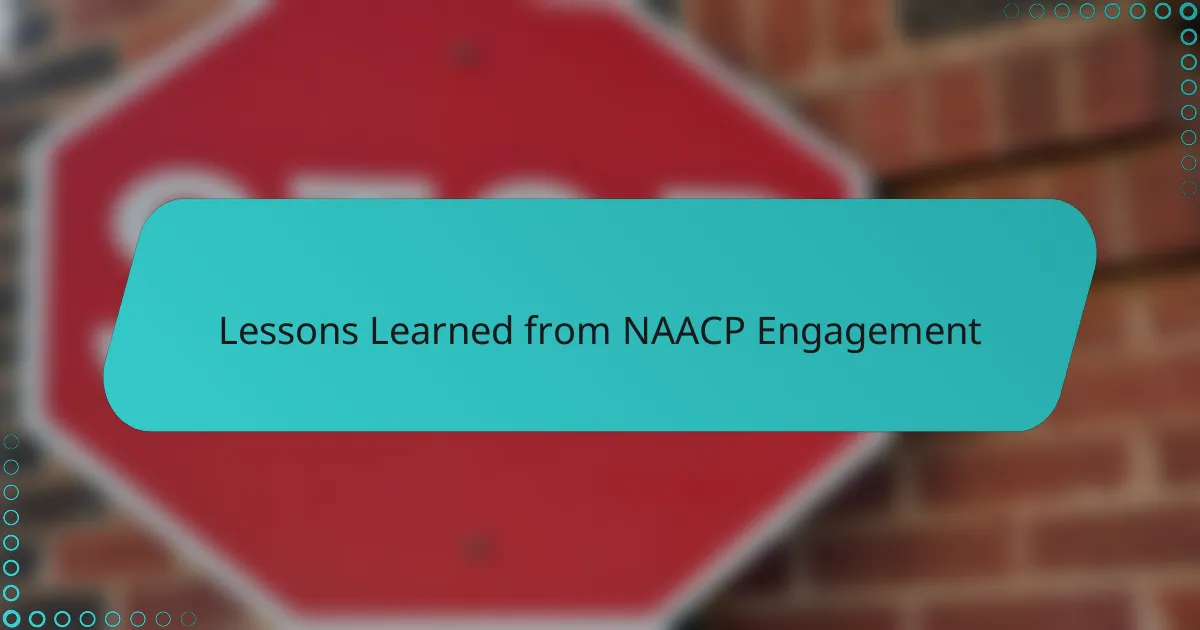
Lessons Learned from NAACP Engagement
Engaging with the NAACP taught me that legal advocacy is as much about listening as it is about speaking. I recall a moment when a community member’s story reshaped my entire approach, reminding me that behind every case are individuals whose lives hang in the balance. Have you ever noticed how empathy can transform legal strategy from cold logic into heartfelt action?
Another lesson was the power of coalition-building. The NAACP’s ability to unite diverse voices—from grassroots activists to legal experts—showed me that progress depends on collaboration, not isolation. It made me reflect on my own advocacy efforts and consider whether I was reaching out enough to build those crucial alliances.
Finally, patience emerged as a vital virtue. Change seldom comes overnight, and the NAACP’s relentless pursuit of justice, often through slow and complicated processes, impressed upon me the importance of endurance. How often do we expect immediate results, forgetting that meaningful legal victories are often the product of long-term commitment?

Practical Tips for Legal Advocacy Participation
One practical tip I learned early on is to stay informed and prepared. When I first joined advocacy efforts, diving into case facts and relevant laws helped me feel confident and credible. Have you noticed how understanding the details can turn nervousness into genuine passion?
Another insight is the value of clear, concise communication. I remember drafting emails and speaking at meetings where simplifying complex legal jargon made my points more relatable. It made me realize that advocacy isn’t just about what you say—it’s about how your message lands with others.
Lastly, getting involved with a supportive community changed everything for me. Showing up consistently, asking questions, and sharing experiences created a sense of belonging that kept me motivated. Doesn’t it seem that advocacy flourishes best when you’re part of a collective effort rather than going it alone?
